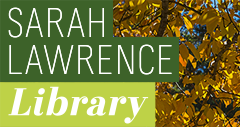Date of Award
5-2018
Document Type
Thesis - Open Access
Department
Dance/Movement Therapy Graduate Program
Abstract
This paper presents development and learning in early childhood as a fully integrated and embodied experience, which is available for use in dance/movement therapy to help pre-school aged children bridge the gap between non-verbal expression and verbal communication. Cognitive, emotional, and social aspects of intelligence begin to accumulate in infancy by physically interacting with the environment. These interactions are enacted and refined through developmental patterns of movement and expression that have been laid out in the frameworks of the Kestenberg Movement Profile, Body-Mind Centering, Laban Movement Analysis, and Bartenieff Fundamentals. The wealth of knowledge, which is accumulated through bodily sensations and interactions with the environment and is initially non-verbal, becomes the foundation for communication with self and others. The gap to be bridged pertains to the transition from the non-verbal and embodied means of growth, learning, and communication of the first three years of life to the verbal manner of expression and learning utilized in formal education. Dance/movement therapy is a modality that taps into embodied knowledge. It can help young children to cognitively understand their emotional experiences in social contexts through the exploration of their movement patterns and rhythms, which express needs to themselves and others non-verbally. Once a child understands, and can verbalize their embodied experience, dance/movement therapy then offers a chance to practice using their words to communicate these thoughts, feelings, and needs more effectively through verbal means.
Recommended Citation
Moskowitz, Jennifer R., "Bridging the Gap: Using the Body as a Conduit within Dance/Movement Therapy to Enhance Holistic and Integrative Development in Early Childhood" (2018). Dance/Movement Therapy Theses. 45.
https://digitalcommons.slc.edu/dmt_etd/45


